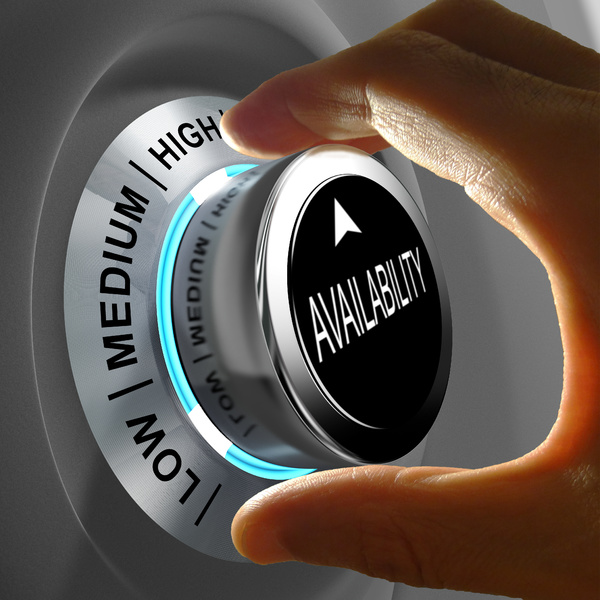
Top Tips for Implementing IBM i HA in the Cloud

IBM i in the cloud opens up a new world of possibilities for high availability (HA) and disaster recovery (DR). Real-time logical replication offers ultimate flexibility, providing a faster, lower-risk path for migration to the cloud, as well as for creating a switchable HA/DR cloud environment to support ongoing operations. Even for IBM shops committed to on-premise for their production servers, a cloud-based environment offers an on-demand HA/DR system that can be up and running in seconds, ensuring uninterrupted operations.

Cloud Environment Basics
IBM i in the cloud is different from a traditional on-premise deployment in several important ways. First and foremost, it involves virtual LPARs (i.e. virtual machines or VMs) configured via a cloud console and hosted by a cloud provider.
That has some important implications. LPARs will run on different hardware within the cloud environment. That means that serial numbers may change, or virtual serial numbers may be used. LPARs are, after all, mobile, so physical serial numbers may not be consistent from one day to the next. Live partition mobility events may occur, or hardware features may change.
IBM now supports virtual serial numbers, but because those are a relatively recent development, very few shops are using them currently. Your software licensing must be capable of handling scenarios in which your LPARs are shifted to a different hardware environment.
Whether you are running your IBM i workloads in the cloud or on-premise, the same underlying performance fundamentals still apply. Cloud LPARs must have adequate processing, memory, and storage resources to support your mainframe applications.
Read our Whitepaper
The Ultimate Buyer’s Guide to HA/DR Solutions
The same real-time replication technology can serve as a foundation for a long-term HA and DR strategy. To learn more about HA and DR for your IBM i systems, read our free whitepaper.
Tape Devices vs. Sync by Wire
IBM i in the cloud also means that access to physical tape drives or other hardware devices may be limited. Even if your cloud provider offers tape backup, shipping tapes for any restore operations will generally be impractical. This has important implications when it comes to disaster recovery.
LPARs are often scratch-loaded with an OS/TR/Cum level, and all OS maintenance is performed by the user. Full system restores may or may not be possible in an IBM i cloud environment, especially for large, complex environments. The recommended procedure, therefore, involves starting up the scratch-installed LPAR and syncing your environment over the network.
To get the ultimate infrastructure flexibility, choose a hardware-agnostic replication technology platform. Precisely Assure MIMIX, for example, has been serving customers in the IBM i space for years, offering replication between any hardware or cloud environment, whether that’s a mix of different IBM i server models, various IBM operating system versions, different storage types, physical or virtual servers, or different network types. That gives you complete flexibility to move from ground to cloud, cloud to ground, or cloud to cloud, supporting managed services or self-managed cloud environments.
IBM i High Availability and Disaster Recovery in the Cloud
Assure MIMIX can be used to migrate to the cloud, but once you’re there, Assure also makes it easy to design and implement a high availability and disaster recovery strategy for your entire IBM i landscape.
A common scenario involves an on-premise IBM i system, with HA/DR in the cloud. With real-time replication to that backup system, IBM shops can have a switchable HA/DR backup ready to run within mere seconds when it’s needed. Many customers prefer to run an HA system on-premise alongside their on-premise production server, with a DR system in the cloud. Assure MIMIX provides replication among the three systems to ensure that they remain in sync at all times.
Advanced scenarios involve cloud-to-cloud replication between two live production IBM i systems or targeted replication for backups.

Migration Challenges
When you’re migrating an IBM i system to the cloud, you’ll encounter some common challenges such as downtime, limited tape availability, testing for potential problems before cutting over to the new system, and fallback planning.
Traditional migration methods typically require some amount of downtime, which can be problematic for mission-critical operations. Typical migration scenarios involve between one and 48 hours of downtime. In a world that operates 24×7, that can be very problematic for most companies. By replicating your production system to a cloud environment using Assure MIMIX, you can begin working with a parallel production environment and cut over when ready.
This method also circumvents many of the problems associated with migrations that rely on tape backups. Tape is too slow and unreliable, and read errors can abort a migration midstream. In addition, many cloud environments lack tape availability altogether.
Regardless of the methods used to move data from on-premise systems to the cloud, it is essential to have a fallback plan in the event that the migration does not go as expected. With real-time replication technology in place, the fallback is essentially automatic. The production server continues to function normally until the cloud-based system is validated and approved for cutover.
Moreover, the newly migrated environment can be tested exhaustively, providing a very high level of confidence before the cutover goes into effect.
The cost of a failed migration can be high. A missed hardware return deadline, failed SLAs, or failure to meet regulatory compliance standards can all be costly events.
Migrate While Live, with Seamless HA and DR
Replicating your live system using Precisely’s technology enables migration with nearly zero downtime, ensuring that your data, applications, and critical objects are transferred to a secondary system accurately and reliably. Assure MIMIX is hardware-independent and OS-independent. In other words, IBM shops can transfer between two different OS versions, and to different hardware environments, including the cloud.
The same real-time replication technology can serve as a foundation for a long-term HA and DR strategy. To learn more about HA and DR for your IBM i systems, read our free whitepaper, The Ultimate Buyer’s Guide to HA/DR Solutions.


